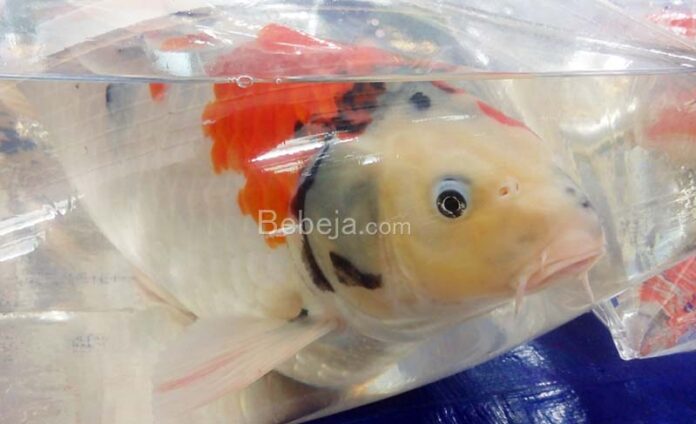Koi breeders and hobbyists always desire koi with bright and solid colors. For breeders, excellent koi color can increase the selling value of these carp relatives.
The bright and solid color of koi is determined by pigments. These pigments can be produced through synthesis in the fish’s body, but other pigments need to be taken in from outside because they are not produced by the fish. One of the pigments found in koi fish is carotenoids and their derivatives, specifically carotene, which produce yellow, orange, and reddish-orange pigments.
While koi fish feed already contains color brighteners, additional ingredients such as carrots (Daucus carota) and pumpkin (Cucurbita moschata) can be added to produce homemade koi feed with the same effect. Both vegetables are rich in beta-carotene, a source of carotenoids. Pumpkin has particularly high levels of carotene, reaching 180 SI (International System of Units). Additionally, the complete nutritional profile of pumpkin, including carbohydrates, proteins, minerals, and vitamins, can help maintain the health of koi fish.
In 2014, Diah Ayu Tri Utami, Yuniarti Aida, and Sinung Pranata from Atmajaya University Yogyakarta conducted research on the effect of pumpkin flour and Azolla pinnata flour on the brightness of fish color. The study found that a combination of 40% pumpkin flour and 20% Azolla pinnata flour produced satisfactory results after 8 weeks on 1.5-month-old kohaku. The level of brightness was analyzed using a color raider tool.
Astaxanthin, found in shrimp, marine fish, and algae, is another natural ingredient that can affect fish color. In 2015, Evan Aspirata Hulu, Syammaun Usman, and Nurmatias from the Aquatic Resource Management Study Program at the Faculty of Agriculture, University of North Sumatra conducted research that demonstrated the effectiveness of adding 3% astaxanthin to fish feed in enhancing koi color brightness. Additionally, the use of Spirulina platensis algae can improve the quality of fish color phenotypes, resulting in a shinier appearance.
